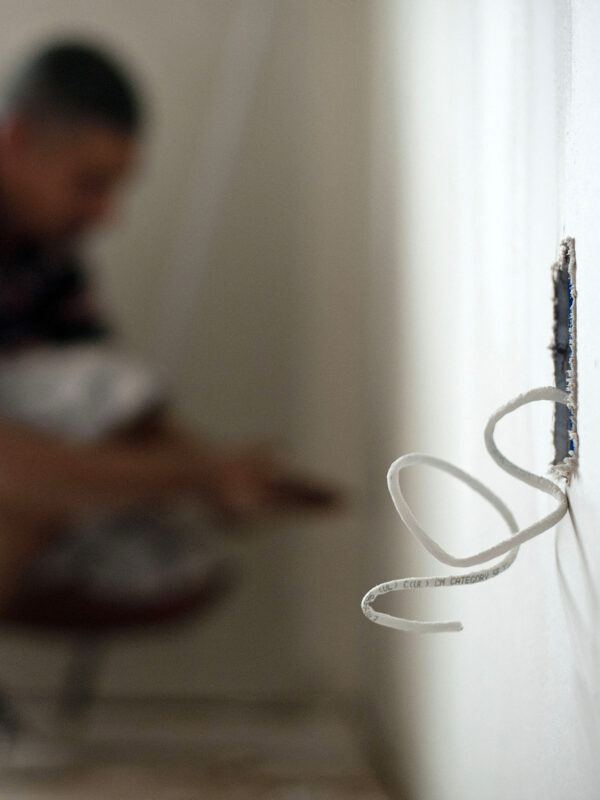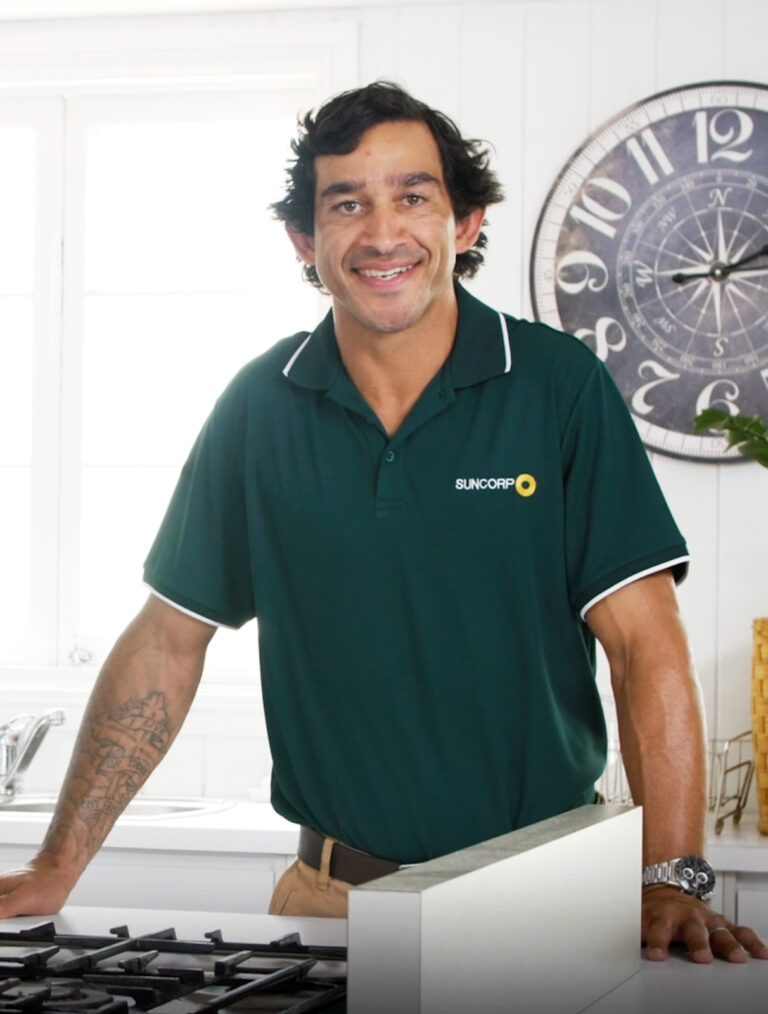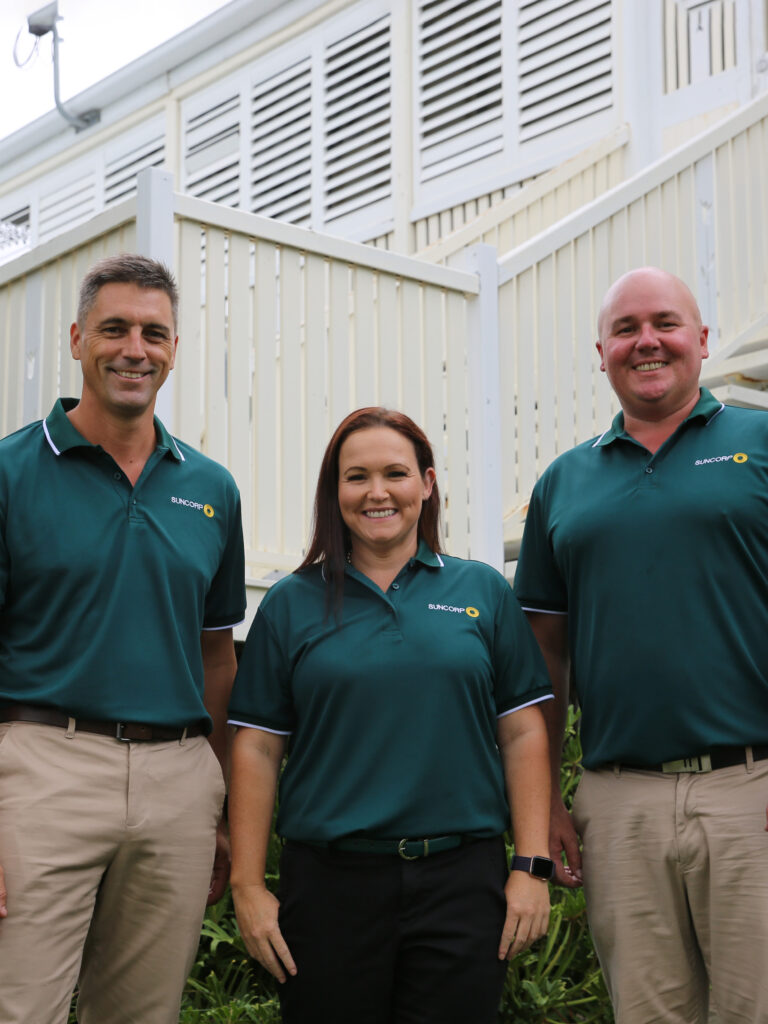
If your home is in an area that’s prone to flooding, or even if you think there might be a slight chance of flooding, knowing how to best prepare your home is essential.
Here’s how to get started so you can limit the damage water ingress may have on your home.
Do you know where your electrical wiring is? For many of us, it’s not immediately obvious. Traditionally, in some homes wiring is run low in the home, in wall cavities and in the floor. However, when you live in a natural disaster-prone state like Queensland, this can lead to serious problems as it’s vulnerable to water that might get into the home.
To boost resilience, in One House we placed wiring in the roof rather than the floor. This leads to powerpoints and switches, also hotspots for danger, being set at least 1-1.2-metres above ground level. By having it in the roof, it’s more shielded from the elements and therefore a more resilient system.
For Queenslanders in a two-storey (or more) home, having a separate electrical circuit for each storey means you can still retain power in one area, even if it is lost in another spot.
A rooftop solar array is another option to deliver consistent power, both for general power and when weather conditions have compromised or cut off your electricity. This would require consideration of service continuance, including a battery and an independent inverter that is above flood level.
When a serious storm is on the way, it’s a good idea to move appliances to the highest position possible, at least 1.2-metres above ground level. The ability to be adaptable and move appliances before a storm is why many modern homes are opting for free-standing appliances.
If you’re building or renovating, consider the placement of your appliances and the trade-offs between freestanding and built-in appliances. If your appliances are built in and you’re not able to unplug them, they’ll be vulnerable to damage from water. The same goes for furniture, and removable or water-resistant cabinetry should be considered.
Taking these steps should make storm preparation easier and can help keep your home resilient against unpredictable weather.
For more information, there are guidelines from the Queensland Reconstruction Authority (QRA) for flood and cyclone resilient building guidance.
The information is intended to be of a general nature only. Subject to any rights you may have under any law, we do not accept any legal responsibility for any loss or damage, including loss of business or profits or any other indirect loss, incurred as a result of reliance upon it – please make your own enquiries.

AUTHOR:
DATE:
From the simple to the complex, see which upgrades can help better protect your home.

Natural hazard resilience has long been a focus for Suncorp, with many other initiatives both existing and in progress. Suncorp Insurance’s Cyclone Resilience Benefit was introduced in 2016 and is available for eligible Home Insurance customers in North Queensland. Customers who undertake eligible upgrades to their home’s cyclone readiness may get a reduction on their Suncorp Home Insurance premium4.
An Australian first for Home Insurance. It’s our commitment to help create more resilient homes. It means that if your home is substantially damaged, we’ll rebuild it stronger with recommended resilience options up to $10,000, in addition to your sum insured, all designed to help withstand severe weather5.

Helping build a more resilient Queensland together.
Insurance is issued by AAI Limited ABN 48 005 297 807 (AAI) trading as Suncorp Insurance. Please read the relevant Product Disclosure Statement before buying any insurance products. The Target Market Determination is also available. The information is intended to be of a general nature only. Subject to any rights you may have under any law, we do not accept any legal responsibility for any loss or damage, including loss of business or profits or any other indirect loss, incurred as a result of reliance upon it – please make your own enquiries.
4. A premium reduction may be available to eligible Suncorp Home or Landlord Insurance customers, with properties above tropic of Capricorn, within 100km from the coast and with certain risk mitigation measures. Eligibility criteria, terms and conditions apply. Find out more.
5. Cover applies to claims with building damage over $50,000 or 10% of sum insured, whichever is highest. Resilience improvements are tiered according to level of cover up to $10,000. Limits, conditions and exclusions apply. Please read the relevant Product Disclosure Statement before you make any decision regarding this product.
COOKIE AND DATA POLICY
We use cookies and other related technologies to improve and tailor your website experience. See our Cookie and Data Policy. This policy provides information about how Suncorp collects and uses data related to your online activity, and how you can choose to remain anonymous.